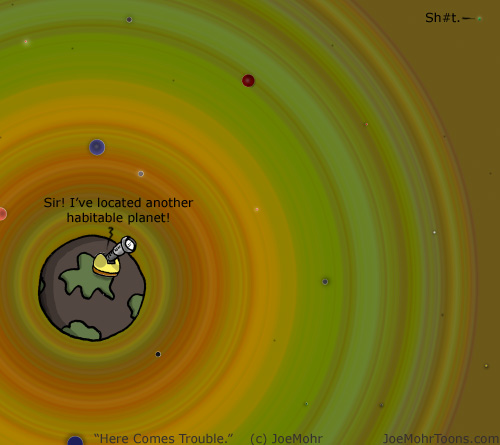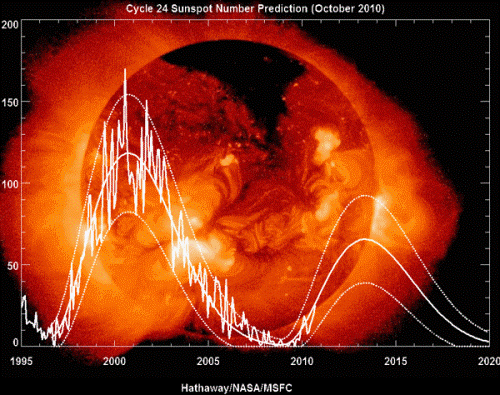
[Updated Jan. 25, 2012, added link to latest Aurora Photos] Early this morning (GMT), January 22, a huge solar flare erupted from the highly active sunspot region 1402. NASA scientists have classified the flare as a M9 flare which makes it just slightly less powerful than an X-class flare (the strongest category; C-class flares are the weakest).
The flare comes just four days after a Coronal Mass Ejection (CME) which sent a massive surge of charged particles towards the Earth, and was believed to be responsible for the intense Auroras seen in the Earth’s atmosphere this past Sunday (Jan. 22).
The extreme ultraviolet flash associated with the M9 flare was captured by all of NASA’s solar observatories: the Solar Dynamics Observatory (SDO), Solar Heliospheric Observatory (SOHO) and the twin STEREO spacecrafts, as well as NOAA’s GOES-15 spacecraft (see top image).

According to a statement by NOAA officials, the current solar storm is the most powerful observed since May of 2005.
Space weather dangers
CME and the flares than frequently accompany them are intensely studied by solar physicists as they can produced dangerous geomagnetic storms when the come in contact with the Earth’s magnetic field. These storms — and the high-energy ‘particle rain’ they can trigger — can be hazardous to astronauts, satellites, and communication systems. They can even , on occasion, cause electric grids on the ground to over-load or explode.
There is no convincing evidence that solar activity directly influences the Earth’s climate. Rather, the main climate impact from the sun comes from Milankovitch cycles (precession, axial tilt, eccentricity) involving long-term, coupled Earth-Sun interactions.
The leading edge of the huge Solar storm will reach the Earth tomorrow around 9am EST and will continue for the next couple of days. As a precaution, trans-polar flights have been re-routed.
An alert was issued by Spaceweather.com, stating:
“A preliminary inspection of SOHO/STEREO imagery suggests that the CME will deliver a strong glancing blow to Earth’s magnetic field on Jan. 24-25 as it sails mostly north of our planet.”
Update! Jan 25, 2012 – Check out this amazing photo sequence of the Northern Lights over Sweden: Powerful Solar Storm Sets Off Amazing Northern Lights Show
Solar Cycle 24 revving up
The current storm comes after a week of M Class flares from another highly active sunspot region; such eruptions are now occurring on almost a daily basis.
Solar physicists anticipate that large CMEs and flares (including possibly more X-Class flares ), as well as the prevalence of active sunspot regions that are associated with them, will be increasing in frequency over the next two years, and will reach their peak (the solar maximum) sometime in 2013.
View this WAY COOL video of the M9 class Solar Flare
Some source mateiral for this post came from the SPACE.com article:


Woah this weblog is fantastic i love studying your posts. Stay up the good work! You realize, a lot of individuals are hunting around for this info, you could aid them greatly.
Thanks for the informations ! 🙂